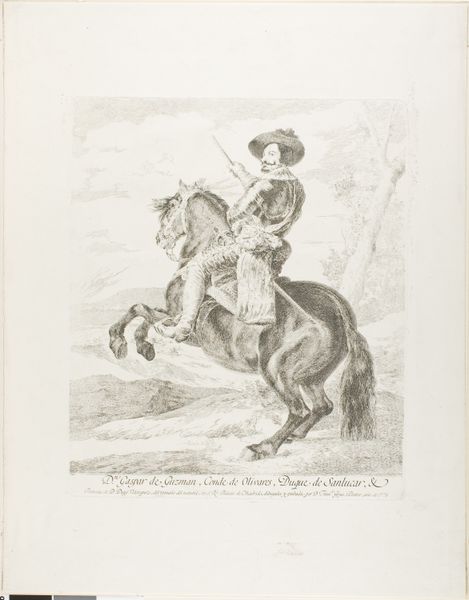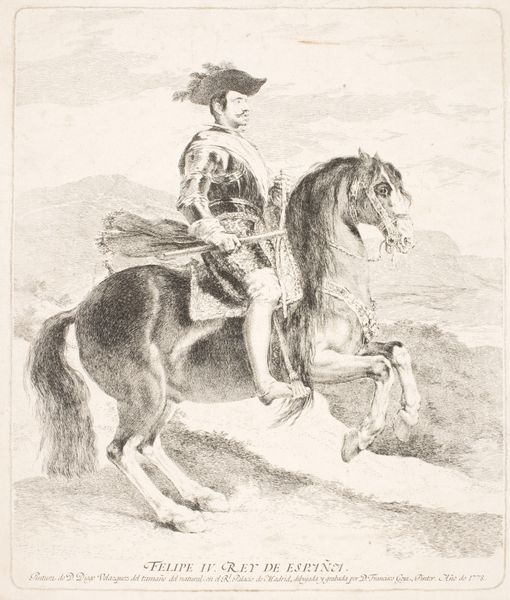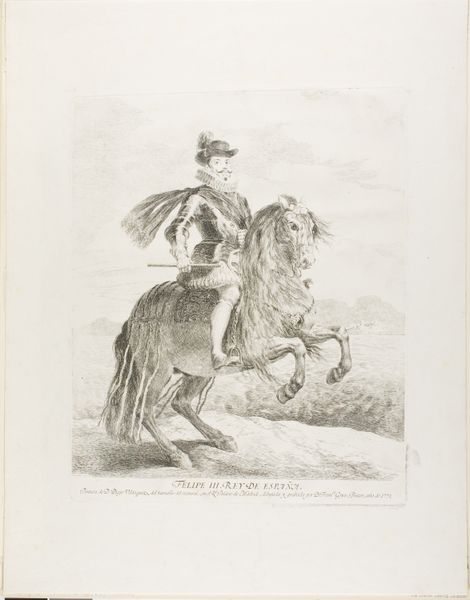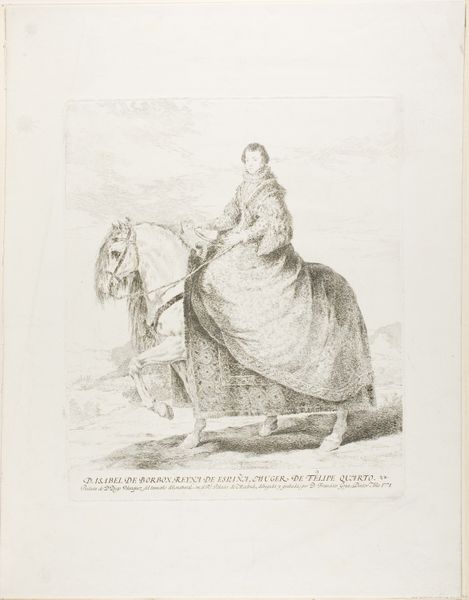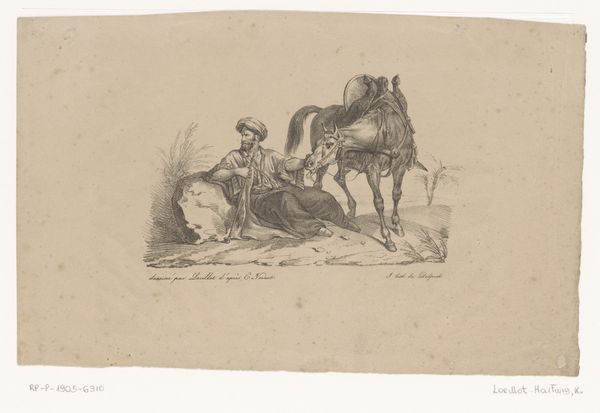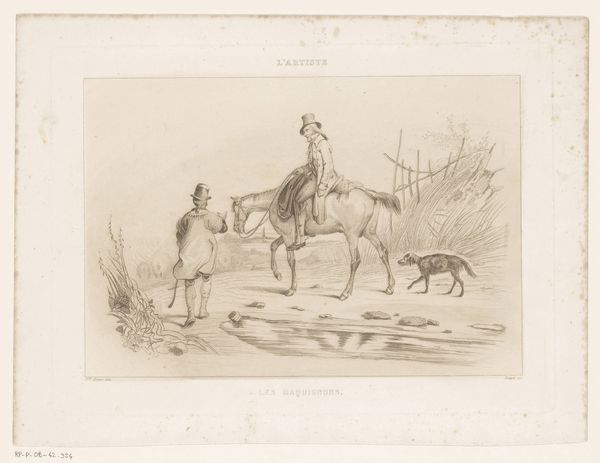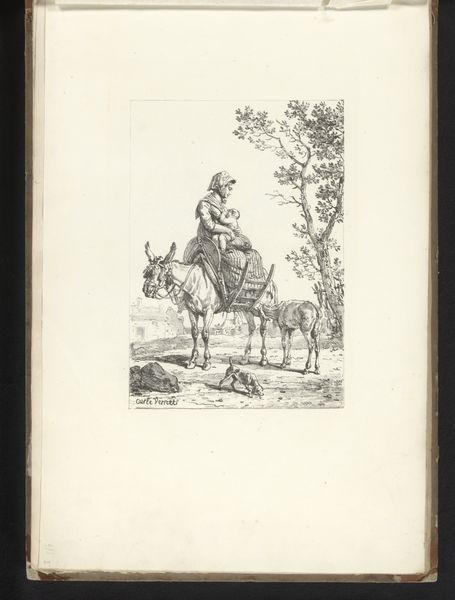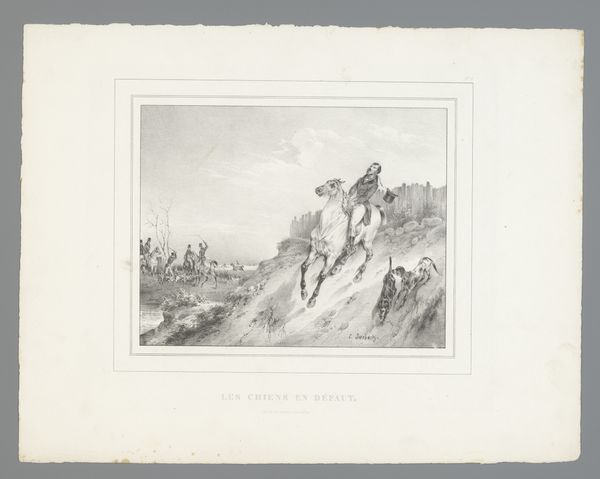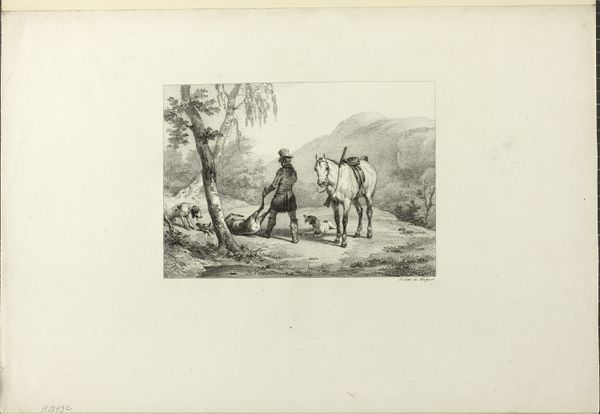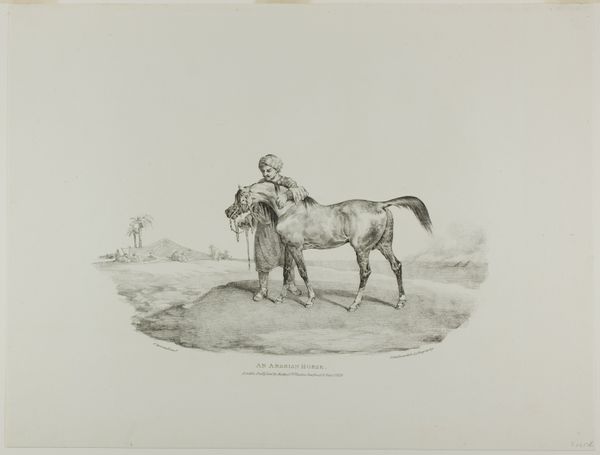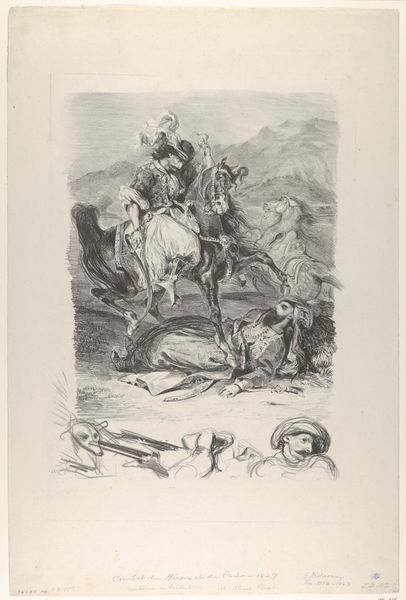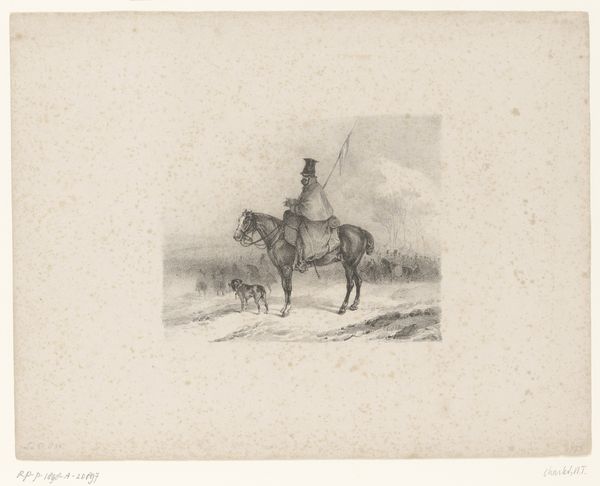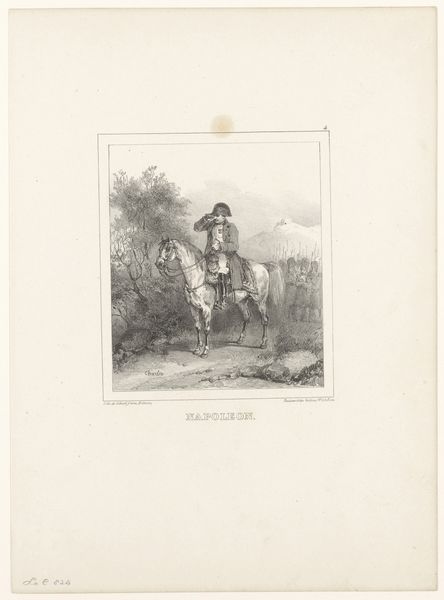
Dimensions: 352 × 310 mm (image); 372 × 312 mm (plate); 553 × 432 mm (sheet, folded at top & bottom)
Copyright: Public Domain
Editor: Here we have Goya’s "Philip IV," made in 1778, using etching on paper. I'm struck by the delicacy of the lines; it feels like a whisper of an image. What do you make of it? Curator: I find this print fascinating precisely because of the "means" of its production. Here, Goya is making a copy after a portrait of Philip IV. This work is made from relatively humble materials - an etching created on a metal plate then transferred onto paper - making the royalty accessible to a broader audience by utilizing the relatively recent development in printing technologies. Editor: So, the medium itself is a political statement of sorts? Curator: It certainly begs the question: what does it mean to reproduce an image of power in such a reproducible format? Consider also, the implications of disseminating imagery of a monarch in a format so easily duplicated, bought, sold, and transported. Editor: I hadn't thought about the mass production aspect. Does the print medium change how we see Philip IV, then? Curator: Absolutely! Think about the labour involved, and then consumption of imagery like this: an etching required the collaboration of artists, artisans, distributors, and collectors, and its very existence blurs lines between propaganda and artistry. What does such material consumption mean? How many people would have had to work, and how much social power do the materials that compose the etching indicate? Editor: That's a really interesting perspective. I was so focused on the image itself. Curator: Exactly. We must consider how art and the very ‘making’ of art operates in our world, and how art relates to material conditions and our relationship to commodities. Editor: I guess I'll never look at a print the same way again. Curator: Nor should you.
Comments
No comments
Be the first to comment and join the conversation on the ultimate creative platform.
